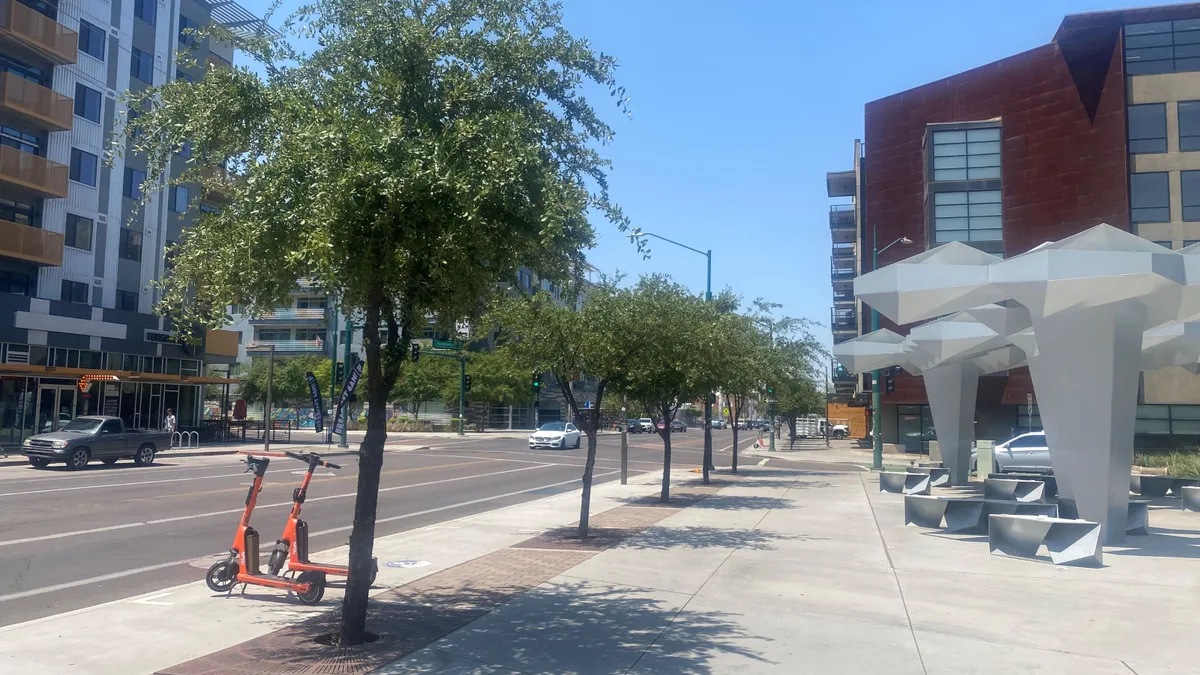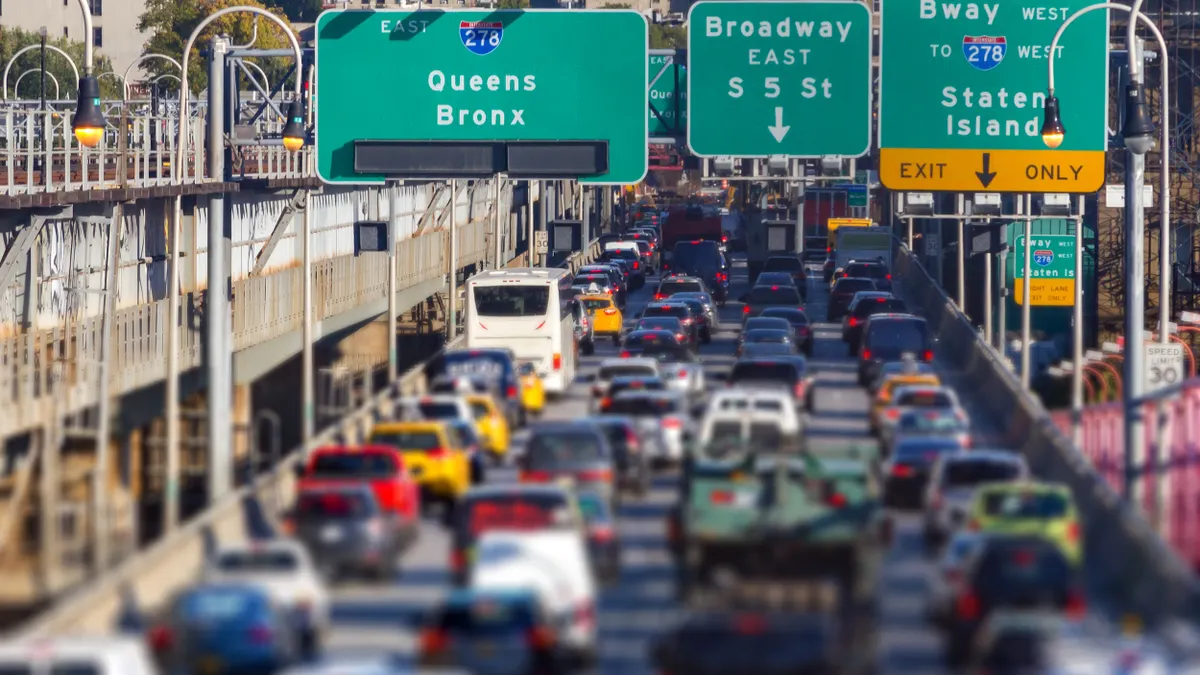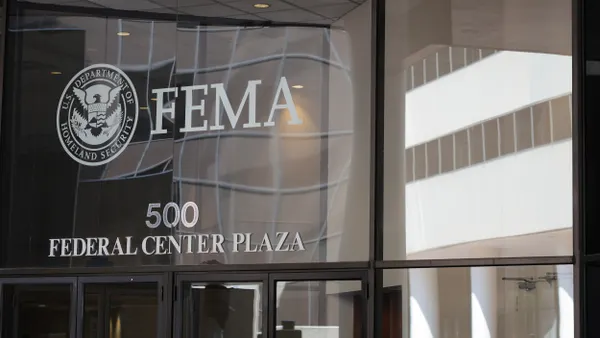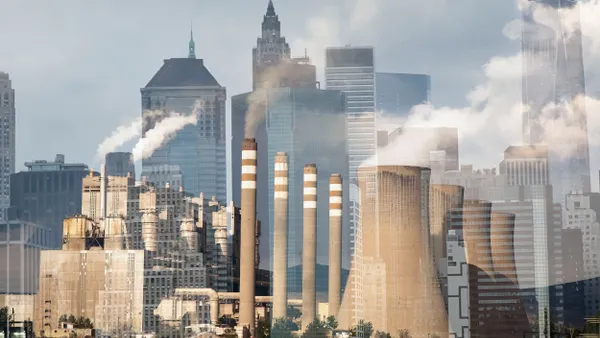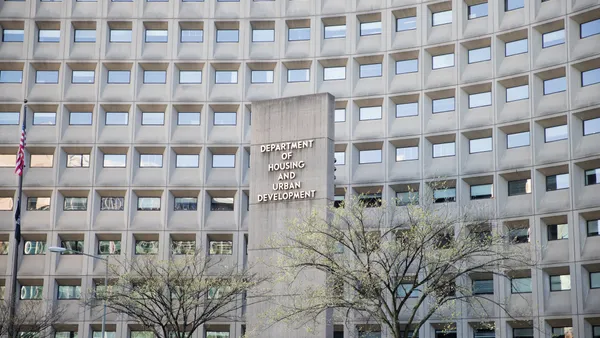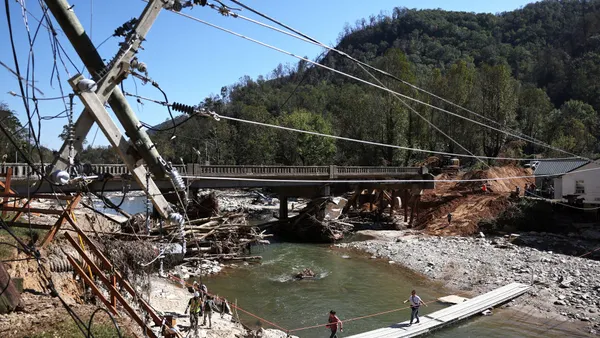In November 2024, as much of the country prepared for colder days, the Phoenix City Council approved a $60 million plan to combat hotter ones with what can be a scarce resource in the desert: shade.
Shade Phoenix outlines dozens of actions that 26 city departments and offices plan to take to expand and preserve shade in the city. Experts who helped Phoenix create the plan say that part of what makes the document unique is its focus on not only tree canopy but also built, or engineered, shade. That can include structures like awnings on buildings or canopies at bus stops. Completing the actions in the plan would result in over 27,000 new trees and 550 new shade structures, according to Phoenix.
“We need to think much more holistically and take an all-of-the-above approach when it comes to thinking about responding to heat,” said Adam Freed, a principal at Bloomberg Associates who helped Phoenix develop the new plan. “It can't just be reliant on trees,” even though they provide outsized public health, environmental and quality-of-life benefits, he said. The need to consider built shade is particularly salient in Phoenix, where water scarcity can make caring for trees challenging.
The recently approved plan is an update and expansion of Phoenix’s 2010 Tree and Shade Master Plan. The new plan marks a shift away from the city’s 2010 goal of planting enough trees to shade 25% of Phoenix by 2030, Freed said. The new strategy focuses less on a citywide goal, instead honing in on implementing the right shade solutions in the right places.
One of the goals in the plan, for example, is to shade all bus stops where possible in the next 10 years. About 75% of Phoenix’s more than 4,000 public bus stops already have shelters that can provide some shade. The city’s Public Transit Department plans to install at least 80 shade structures at bus stops each year as it works toward its goal.
“This plan is more targeted in its effort to say ‘We're not sure if we can really increase the canopy citywide, and we're also not really sure if that is the goal that we're most interested in and that will have the biggest impact,’” said Jacob Koch, who leads client engagements with city governments at Bloomberg Associates and also helped Phoenix develop the new shade plan. “We want to increase the canopy in the places that need it most and that have not had the same level of investment and public infrastructure, historically.” More than 50% of the plan’s total investment will be made in low-to-moderate-income communities and 85% will be made in low-, moderate- and middle-income communities.
The plan’s priorities represent an “evolution” among cities that are “recognizing that risks are not experienced or felt the same across their whole geographies,” Freed said.
City officials in Phoenix know that more must be done to increase shade beyond the actions outlined in the plan. The document specifically calls out the need to secure more sustained funding sources for this work and to improve the budget and practices for maintaining trees and built shade structures. The city also calls for better integration of community members into the planning, implementation and evaluation processes as well as the pursuit of advanced technologies that can help Phoenix monitor the impacts of shade.



